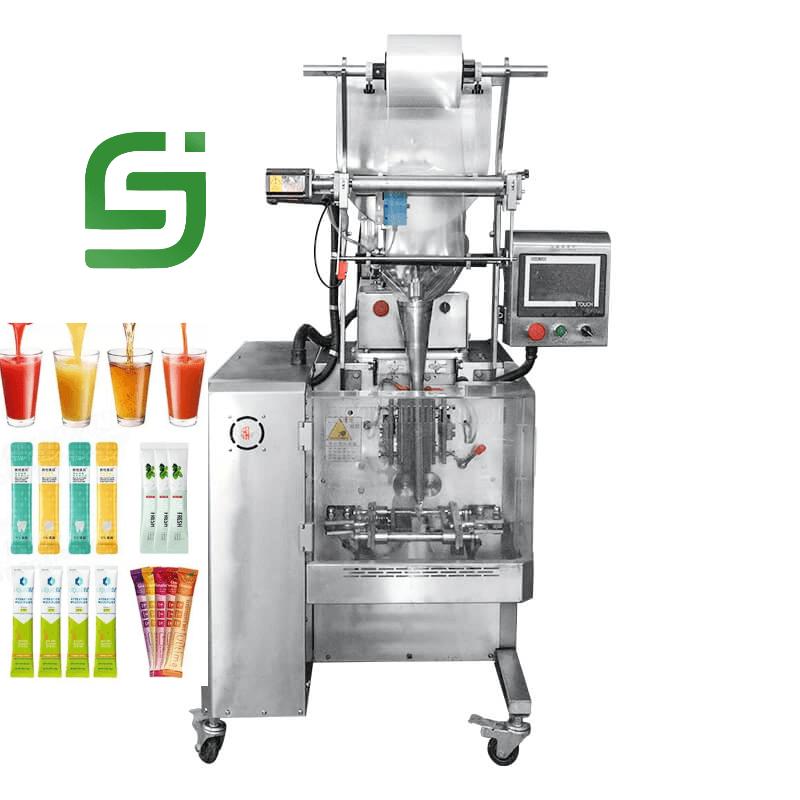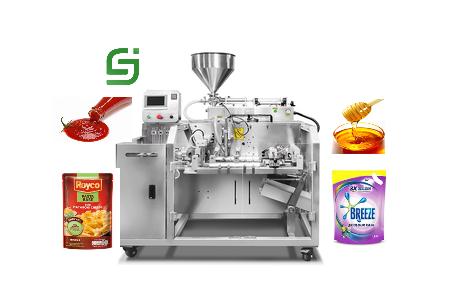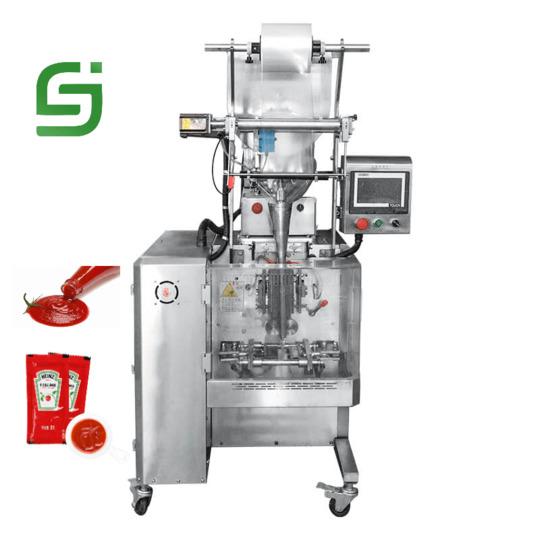Author:YISEN Pouch Packing Machine Manufacturer TIME:2024-11-14
Granule packaging machines are essential in various industries, including food, pharmaceuticals, and chemicals. These machines are designed to efficiently package products with different particle sizes. The ability to handle various granule sizes is crucial for maintaining product integrity and ensuring high-quality packaging. This article explores how granule packaging machines manage products of different sizes, examining the technologies and processes that enable them to operate effectively.

Granules come in various sizes and shapes, which can significantly impact the packaging process. Understanding these differences is vital for optimizing machine settings and ensuring accurate packaging. Granule sizes can range from fine powders to larger pellets. The size affects flowability, density, and how the granules interact with each other during packaging. For instance, finer granules may require different handling techniques compared to coarser ones, as they are more prone to clumping and dusting.

One of the critical components of a granule packaging machine is its feeder mechanism. The feeder must be adaptable to handle various particle sizes effectively. There are several types of feeders, including volumetric and gravimetric systems. Volumetric feeders dispense a specific volume of granules, making them suitable for uniform particle sizes. Gravimetric feeders, on the other hand, weigh the granules before dispensing, allowing for greater accuracy. This adaptability ensures that the machine can accommodate different granule sizes without compromising performance.
The design of chutes in a granule packaging machine plays a significant role in managing different particle sizes. Adjustable height and width allow the equipment to accommodate various granule dimensions. Wider chutes can be beneficial for larger granules, preventing blockages and ensuring smooth flow. In contrast, narrower chutes may be more effective for smaller particles, reducing the risk of spillage and ensuring precise placement into containers. This flexibility is crucial for maintaining efficiency and minimizing waste during the packaging process.
To enhance the handling of granules, many machines incorporate vibration or oscillation techniques. These methods help to promote the flow of granules through the machine, especially when dealing with fine or sticky particles. By applying controlled vibrations, the machine can ensure that granules move smoothly along the transport pathways, minimizing clumping and maximizing throughput. This technology is particularly useful when transitioning between different particle sizes, as it can help maintain consistent flow rates.
Modern granule packaging machines often integrate advanced sensor technologies for monitoring and adjusting operations in real time. Sensors can detect variations in granule size and shape, allowing the machine to make instantaneous adjustments to feeding and packing processes. For instance, if the machine detects an influx of larger granules, it can modify the speed of the feeder or adjust the chute width to maintain optimal flow. This level of automation not only improves efficiency but also enhances the overall quality of the packaged products.

Control systems play a pivotal role in the operation of granule packaging machines. Sophisticated software allows operators to set parameters for different particle sizes, ensuring that the machine functions optimally. Operators can input specific requirements for each type of granule, and the machine will adjust its settings accordingly. This level of customization is essential for industries that frequently switch between different products, as it reduces downtime and increases productivity.
Before a granule packaging machine is put into operation, thorough testing and calibration are necessary. This process ensures that the machine can handle various particle sizes effectively. Calibration involves adjusting machine settings based on the characteristics of the granules, such as flow rate, density, and moisture content. Regular testing and maintenance are crucial to ensure that the machine continues to perform well, especially when handling products of varying sizes over time.
Material compatibility is another critical factor in the design of granule packaging machines. Different materials may require unique handling techniques based on their physical properties. For example, hygroscopic materials tend to absorb moisture, affecting their flow characteristics. Machines must be designed to mitigate these issues, ensuring that all particle sizes are handled appropriately. Using materials resistant to wear and damage can also prolong the life of the machine and maintain performance across various applications.
In conclusion, granule packaging machines are engineered to effectively handle products of different particle sizes through a combination of advanced technology, adaptable design, and precise control mechanisms. Understanding the unique characteristics of granules, employing suitable feeder systems, and utilizing modern sensors and control software are all essential for achieving efficient packaging. As industries continue to evolve, the ability to manage diverse particle sizes will remain a crucial factor in maintaining product quality and operational efficiency.